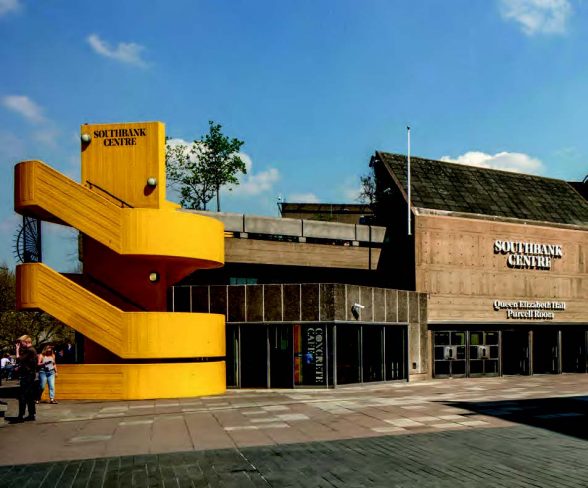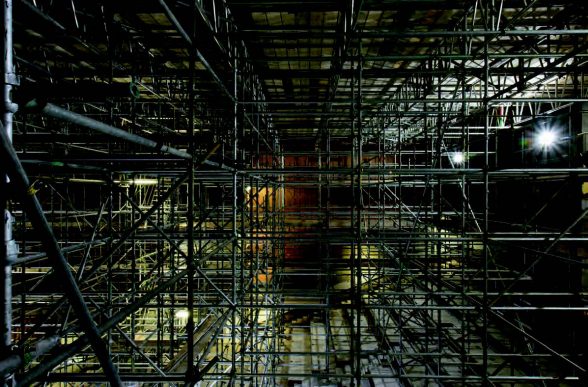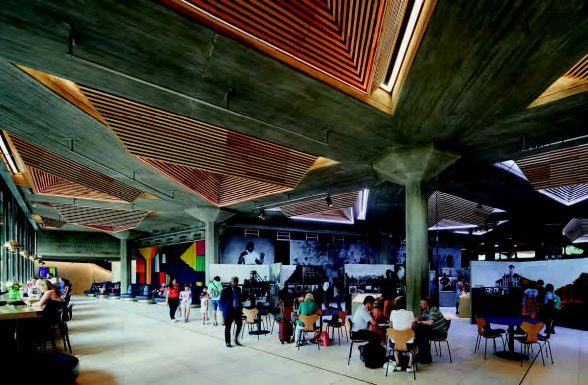This website uses cookies
This website uses cookies to enable it to function properly and to analyse how the website is used. Please click 'Close' to accept and continue using the website.



Many C20 members will recall the controversies over London’s South Bank Centre. David Heath relates a more positive outcome
The South Bank Centre (or the Southbank Centre, as its management prefers to call it) includes the Royal Festival Hall (1951, listed Grade I in 1988) alongside the Queen Elizabeth Hall, the Purcell Room and the Hayward Gallery, which are all unlisted. Last year the DCMS for the fourth time refused to list them, despite a renewed campaign by C20 and a recommendation to list by Historic England. The Centre has consistently opposed listing, and employed consultants to justify successive five-year Certificates of Immunity. To many, including C20, it seemed inexplicable that they failed to see the whole complex as a post-war cultural triumph; Gillian Darley has described its stance as ‘architectural self-loathing’.
The history of these three buildings falls into three periods. Building began before the London County Council was abolished in 1965 to be replaced by the Greater London Council. The Queen Elizabeth Hall (QEH) and Purcell Room were opened in 1967, and the Hayward Gallery in 1968. Then there have been the various proposals for demolition or major alteration, most recently the proposed remodelling as the ‘Festival Wing’ in 2013; and now what we must now hope is a conservation-led future with the completion of major repairs to the Hayward Gallery in 2015, QEH, Purcell Room and joint foyer in 2017, and the Undercroft in 2019.
It’s ironic that these recent repairs (which we have welcomed) are by Feilden Clegg Bradley Studios (FCBS), the architects responsible for drawing up the proposed ‘floating glass box’ addition and further new-build along the Waterloo Bridge frontage that was part of the Festival Wing scheme, which we so vigorously opposed. C20’s campaign was widely supported, though it has to be said that it was the skateboarders using the Undercroft (who would have been displaced to a new site beneath Hungerford Bridge) who were most numerous in opposing the planning application. In January 2014, the Mayor of London described the Undercroft as ‘the epicentre of UK skateboarding’ and part of the cultural fabric of London: ‘It attracts tourists from across the world and undoubtedly adds to the vibrancy of the area – it helps to make London the great city it is.’ In September 2014 a formal agreement was announced between Long Live Southbank (the skaters’ organisation) and the Centre securing the open space beneath the QEH as a long-term site for skateboarding and other urban activities.

FCBS has now published Respecting Brutalism: The Hayward Gallery and Queen Elizabeth Hall at 50, an excellent book about the recent repairs. As Peter Clegg writes in it, ‘The delights of working with existing buildings come from unpicking their history, understanding the context and motivation behind the original concept and where the formative ideas came from.’ Many conservation architects working on old buildings would share this view, but it is good to hear it applied to a late C20 building. Their approach of treating the whole complex as if it was a listed structure is equally welcome. ‘The whole scheme becomes an exercise in the tectonics of concrete construction [but] more significant in terms of the way the building developed is the freedom which was given to the environmental engineering to allow the outer layer of the ductwork to become the very explicit part of the language of the building.’ This understanding has been at the core of
the recent work.
In The Architecture of the Well-tempered Environment (1969) Reyner Banham discussed the complex, celebrating ‘the silhouette the buildings derive from the disposition of the main service ducts [which is] “romantic” in the conventional everyday sense of the term.’ But, as Clegg writes, ‘In a fifty year old building it is the environmental services which show the most signs of stress’, and he reports that the QEH’s air conditioning had been turned off in the 1980s. A great deal of the current work has involved replacing the building’s services, while retaining the giant ducting and much of the pipework. For a complex that was all about serviced interior spaces, this has been a transformation.

The work to the interiors gives the impression of a light touch, but the stripping away of incremental and unsuitable additions has demonstrated the basic robustness of the original build. For example, in the QEH the leather upholstery has been replaced, but the formed aluminium profiles of the seating have been retained, while the board-marked concrete has been lightly cleaned and retained.
Three areas of alteration are notable for their sensitive and appropriate detailing: the pyramid roof of the Hayward Gallery; what FCBS describe as the ‘geological ceiling structure of the foyer’; and the ‘opening up the corner of the foyer’. It’s worth pointing out that all of this work would probably have received listed building consent if the complex had been listed: conservation should be about managing change.
A lot of money has been spent and it isn’t always easy to see where it has gone, though this is often evidence of successful conservation. The complex doesn’t suddenly look as new. And the work is incomplete: the external walkways and staircases still need careful repair, and the whole outside space – including service areas and access for people with disabilities – needs further consideration and investment.
The work to the Undercroft has also been completed and the skateboarders have returned – as have the graffiti taggers that go with them. The management’s plan – with limited success – is to restrict tagging to a specific part of the Undercroft. However, the proliferation of riverside retail sheds who are apparently allowed to do as they please doesn’t set a good precedent. What has been achieved is, we hope, a new beginning, but a Conservation Management Plan for the whole of the Southbank Centre will be vital to its future.

Become a C20 member today and help save our modern design heritage.
Comments